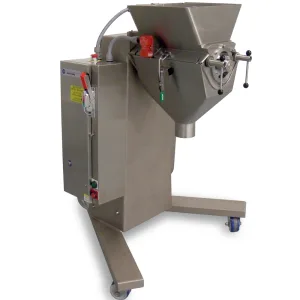Stokes’ Granulators: Superior Precision-Engineered Equipment For Optimal Particle Size Control In Pharmaceutical Manufacturing.
Showing the single result
Stokes Granulator Model 43-6
Discover the Stokes Granulator, an innovative solution tailored for transforming both wet and dry materials…
Discover the Stokes Granulator, an innovative solution tailored for transforming both wet and dry materials into precisely sized granular products. This versatile machine stands out for its ease of product changeover, allowing rapid adaptation to different manufacturing needs. Its design features a fully removable stainless steel working section, enabling thorough cleaning and quick replacement, minimizing downtime. The Stokes 43-6 Granulator comes in various configurations, including compact versions for convenient table or bench-top mounting, making it an ideal choice for diverse operational scales. Whether for large-scale production or smaller, specialized batches, the Stokes Granulator offers efficiency, flexibility, and reliability in material processing.
